What is the United States Judiciary?
The United States Judiciary is a branch of the US government with the constitutional powers to act impartially with fairness and justice in interpreting the laws made by congress. It's duties also include resolving disputes arising from the laws, actions of the executive in the implementation of those laws and applying the laws to individual cases between persons - their understanding, application, and breach of those laws. The Judiciary also has the responsibility to protect the constitutional rights and liberties of persons within the United States.
What is the function of the U.S Judiciary?
The U.S Judiciary functions independently of the legislative and executive branch but not in abeyance. Established by Article III of the US Constitution, it is required to cooperate with the other two branches and is subject to checks. It also checks the other two branches. For instance, the Legislative Branch has the power to approve or reject persons nominated for appointment as federal judges. Congress also has the power to impeach a federal judge. The Judiciary can carry out a review of legislation passed by Congress and declare the legislation unconstitutional.
Between the Executive and the Judiciary, the Executive has the power to nominate a federal judge and the Judiciary has the power to determine the limits of the powers of the executive. The Chief Justice sits as President of the Senate during proceedings for the impeachment of a President. Checks and balances are applied in line with the Constitution. They cannot be used as a tool for the circumvention or as a tactic to wield the ultimate power.
Congress and the Judiciary
The Constitution vests the powers of the Judiciary in the Supreme Court and in such other inferior courts as Congress may from time to time see fit to establish. Congress has the responsibility to spell out the powers, jurisdiction, roles, and functions of the Supreme Court as well as those of the inferior courts it is charged to establish. Congress passed the Judiciary Act of 1789 as a first step to exercising the power to fill out the provisions of the Constitution and specify the guidelines for the functioning of the Supreme court and establish the federal court system. The Act created a three-level federal court system, consisting of the Supreme Court as the apex court, the Circuit Court as the intermediate court to hear appeals from the lower, trial court and the Federal District Courts as the lower courts. Congress also has the authority to determine the location and number of court with powers to hear appeals.
The judiciary as a branch of government is not unique to the federal government. States have a judicial system as well as an executive and legislative branch. State courts consist of the trial courts with jurisdiction to hear specific subject matters or to act within a particular geographical location, appellate courts to hear the legal claims from parties who are dissatisfied with the decision of the trial court and the supreme court, to hear appeals from the appellate court.
Structure of the US Federal Court
The U.S Federal Court system consists of three main levels:
- U.S Supreme Court
- U.S Circuit Court of Appeals
- U.S District Court
What is the U.S Supreme Court?
The Supreme Court of the United States (SCOTUS) is the only court created and vested with jurisdiction under the Constitution. In the hierarchy of courts, the Supreme court is the highest National Tribunal with original jurisdiction to hear matters relating to all cases affecting foreign diplomats, public ministers, and counsels. The Supreme Court also has discretionary appellate authority (the authority to hear appeals and reverse or modify the decision made by a Circuit Court). SCOTUS makes the final declaration on all contentions on the interpretation of US laws and the Constitution.
What makes up the Supreme Court?
The Supreme Court consists of one Chief justice of the US and 8 Associate Supreme Court justices. Although the Constitution does not specify the number of Justices of the Supreme Court, the number has remained 9 since 1869 following the enactment of the Circuit Judges Act. Before the Circuit Judges Act, the number of numbers had fluctuated from 6 under the Judiciary Act of 1789 to 7 in 1807, 9 in 1837 and 10 in 1863 and back to 7 in 1867.
What happens with a Vacant Justice Seat?
When the seat for a Supreme Court justice becomes vacant, on account of the death or retirement of a former one, the nomination of a new Supreme Court Justice is made by the President in consultation with Senate. The nomination begins with the President announcing the names of the nominees, after consulting with the Senate, the name is then sent to the Senate Judicial Committee, and other steps follow.
The Senate Judiciary Committee, would usually collect background information of the nominee, verify their credentials and hold a hearing to question the nominee on their philosophy, track records and credentials. During the hearing, the Committee hears from witnesses for and against the nominee.
The Judicial committee votes on the nomination and sends its recommendation for approval or rejection to the full Senate. The Committee may also return a no recommendation to the Senate. If the nominee is rejected, the President would have to send in a new nomination and the process starts all over.
Filibustering a Judicial Nomination
In the past, a senator could decide to stall the nomination process by initiating a filibuster, an unlimited debate, delivering a long, usually unrelated speech on the floor, preventing progress unless a successful cloture vote by 3/5 votes ends the filibuster. A 3/5 vote meant 60 out of the 100 senators had to vote to stop the filibuster. If the cloture vote fails, the President must name a new nominee that must go through the entire process from the beginning.
However, since 2017, the Senate changed its rules to end a partisan filibuster on the nomination of a Justice of the Supreme Court by a cloture vote of 51 Senators rather than 60. This is often described as the nuclear option. At the end of the debate, the Senate votes to confirm the nominee by a simple majority of Senators present. The Vice President may cast the deciding vote to break a tie. Once the Senate confirms the nominee, they are immediately sworn in at the White House by the Chief Justice of the Supreme Court.
How Long is the Tenure of a Supreme Court Justice?
Generally, the Constitution is interpreted to provide a lifetime tenure for Supreme Court justices. The essence of the interpretation is anchored on the premise that Justices will hold no allegiance to the President or anyone for fear of removal. Rather, the judiciary would have its independence to be nonpartisan and impartial. This has been subject to debate as the Constitution does not outrightly provide for lifetime tenure rather, it says judges “shall hold their Offices during good Behaviour.”
Supreme Court of the United States
1 First Street, NE
Washington, DC 20543
What is the U.S Court of Appeal?
The judiciary Act of 1789 established Circuit courts, divided into regions. There was one Circuit Court in each of the Southern, Eastern and Middle states. Each Circuit had 2 Justices of the Supreme court. The Circuit Court served mainly as trial courts with limited appellate jurisdiction. Subsequently, the number of Justices reduced to one and Congress passed the Judiciary Act of 1891 also known as the Evarts Act, established 9 courts of appeals, one for each judicial circuit at the time and created the position for a Circuit justice. It also gave the courts of appeals a wider jurisdiction over appeals from the US District and Circuit courts and reduced the types of cases that may be sent to the Supreme court on appeals. Congress also established the Circuit court Judicial Council in 1939 further expanding the administrative roles of the court of appeals. In 1948, Congress renamed the Federal appellate courts, to U.S. Courts of Appeals for each Circuit.
What Constitutes the U.S Court of Appeal?
In 2019, there were 13 US Court, one for each of the 12 regional circuits that hear appeals on cases from District Courts within its borders and one for the Federal Circuit with jurisdiction on specific matters nationally.
Note: Although appeal courts are sometimes called Circuit courts, they are different from the United States Circuit court established in 1789 and operated until 1911.
The US Court of appeals currently consists of a total of 179 judgeships. In line with the United States Code number of judges of the Courts of Appeals differ from Circuit to Circuit. Like all federal judges, they are appointed on the confirmation of their appointment by the US Senate.
US Appeals Courts have appellate jurisdiction over both criminal and civil cases already determined by US District Courts except for interlocutory appeals which may be heard before the final ruling of the District Court. The rulings of the lower courts are reviewed by a 3 Judge panel on the points or application of the law by the lower courts.
The Federal Circuit has jurisdiction to hear appeals from all over the US, on matters relating to patent laws, decisions of special trial courts- U.S. Court of Federal Claims, U.S. Court of International Trade and other specialized cases.
Additionally, the Courts of Appeals may review and enforce the orders of some federal regulatory agencies like the Securities and Exchange Commission (SEC), National Labor Relations Board (NLRB), and the US Federal Trade Commission (FTC).
List of U.S. Courts of Appeals
- First Circuit
- Second Circuit
- Third Circuit
- Fourth Circuit
- Fifth Circuit
- Sixth Circuit
- Seventh Circuit
- Eighth Circuit
- Ninth Circuit
- Tenth Circuit
- Eleventh Circuit
- District of Columbia Circuit
- Federal Circuit
What are Federal District Courts?
U.S District Courts are general trial courts under the Federal judicial system. A level below the Courts of Appeals, they consist of 94 District Courts located within the 12 regional Circuits. Every state (including the District of Columbia) has at least one District Court and as many as 4 in some states with denser populations. Trials in District courts are heard by at least one US District Judge or a judge, and jury. District Judges are appointed in the same manner as all other Federal judges, on the nomination of the President and approval of the Senate.
 Elections and Voting
Elections and Voting State & Local Government
State & Local Government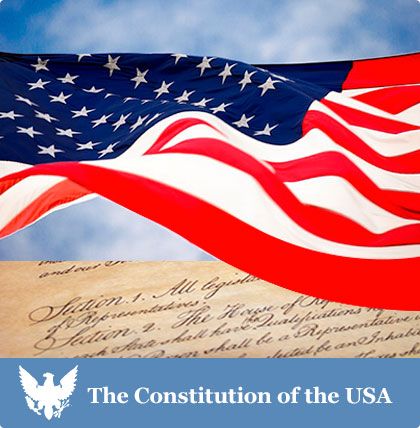 The Constitution
The Constitution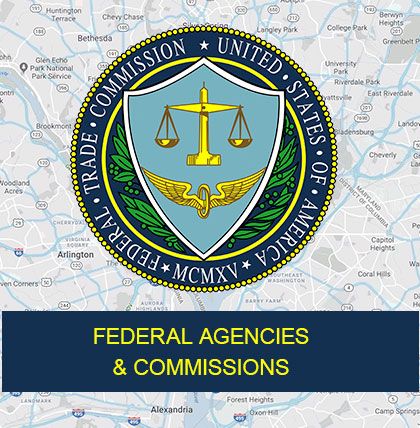 Federal Agencies & Commissions
Federal Agencies & Commissions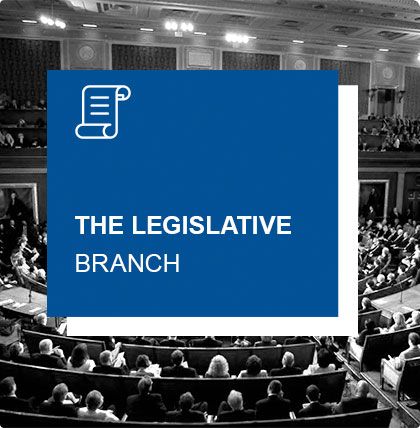 The Legislative Branch
The Legislative Branch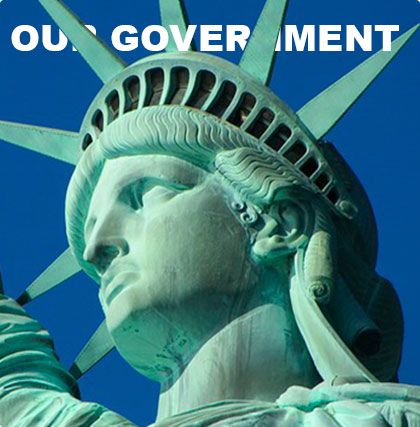 Our Government
Our Government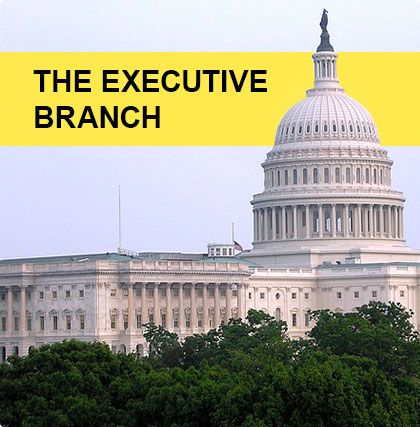 The Executive Branch
The Executive Branch Court Records
Court Records